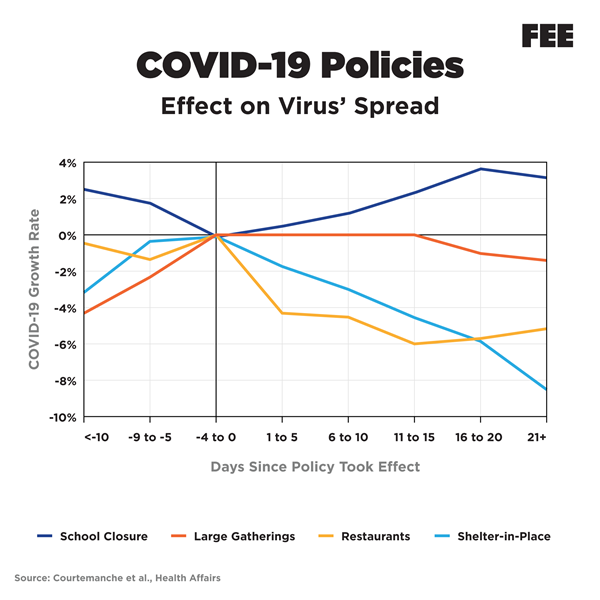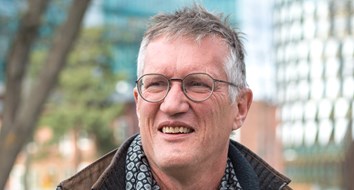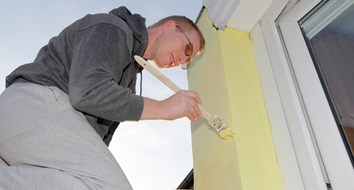On May 12, CNN anchor Chris Cuomo scolded Rand Paul for comments the Senator made in a congressional hearing the previous day, stating Paul had “a sickness of the soul.”
Paul, while speaking to infectious disease expert Anthony Fauci, had questioned the national COVID-19 strategy of encouraging schools to close, noting that many rural areas had not reached pandemic levels.
“We never really reached any pandemic levels in Kentucky and other states. We have less deaths in Kentucky than we have in an average flu season. It’s not to say this isn’t deadly, but really outside of New England, we’ve had a relatively benign course for this virus, nationwide,” Paul told Fauci, the Director of the National Institute of Allergy and Infectious Diseases. “And I think the one size fits all, that we’re going to have a national strategy and nobody’s going to go to school, is kind of ridiculous. We really ought to be doing it school district by school district and the power needs to be dispersed, because people make wrong predictions.”
Cuomo’s critique was harsh, but not particularly unique. Paul’s comments incited an avalanche of criticism from the media (as well as praise from the right and from other commentators skeptical of the efficacy of lockdowns).
Despite the backlash, Paul on Friday doubled-down on his position, pointing out that the fatality rate of the virus is 0.00008 percent for individuals under age 25, or about one in 1.25 million.
“Open our schools now!” Paul declared in a tweet that went viral.
“Below 25 years old the fatality rate of COVID-19 is 0.00008%, or roughly one in 1.25 million . . .” Open our schools now!https://t.co/Md3zGjDmVV
— Senator Rand Paul (@RandPaul) May 22, 2020
Once again, Paul’s tweet was met with criticism. However, it all received support from an unlikely place.
Writing at Mother Jones, a left-leaning American magazine, Kevin Drum said an abundance of research supports Paul’s assertion that school closures are an ineffective way to contain the spread of COVID-19, and may actually increase deaths.
“[The] best evidence we have seems to suggest that school closures have a fairly minimal effect taken on their own, and a zero or maybe even negative effect when you net out the increase in COVID-19 deaths that they cause indirectly,” writes Drum, a longtime blogger at The Washington Monthly.
Drum is careful to point out that we don’t yet know conclusively that school closures don’t work—”at the moment, there is no conclusive proof,” he correctly observes—but he points to five studies that suggest Paul is onto something.
First, there is a study in Health Affairs published on May 14 that suggests school closures aren’t just ineffective, but actually increase COVID-19 deaths (see graph below).

Second, there is a JAMA Network study that notes the experiences in China and Taiwan don’t support the hypothesis that school closures decrease the spread of COVID.
Although no official data are available, to our knowledge, on the effectiveness of school closure during the COVID-19 epidemic, the poor relevance of this restrictive measure seems confirmed by the evidence that in Taiwan, the spread of COVID-19 was minimized without widespread planned school closures….The poor effect of school closure during coronavirus epidemics has already been evidenced in some studies carried out during the SARS epidemic. In China, it was found that school closure for 2 months was not significantly effective for disease prevention mainly because of the very low incidence of symptomatic disease among school-aged children.
Then there is an April study in the Lancet.
“Our model estimates that if the infection mortality rate of COVID-19 increases from 2.00% to 2.35% when the health-care workforce declines by 15.0%, school closures could lead to a greater number of deaths than they prevent,” concluded Professor Eli P. Fenichel and Jude Bayham, PhD.
And there was a “rapid systematic review” of a body of scientific literature investigating the effects of school closures.
Recent modelling studies of COVID-19 predict that school closures alone would prevent only 2–4% of deaths, much less than other social distancing interventions. Policy makers need to be aware of the equivocal evidence when considering school closures for COVID-19, and that combinations of social distancing measures should be considered.
Finally, there is a study in Science based on data from Wuhan and Shanghai which found that while “school closures cannot interrupt transmission on their own, they can reduce peak incidence by 40-60% and delay the epidemic.”
We’re still learning about COVID-19, but based on what we do know, Drum says it’s probable that school closures: a) have little effect; b) are likely not worth the “tremendous” impact they have on children and parents.
It’s worth noting that Drum, who is politically liberal, recognizes that this data and perspective may not be welcome news. Indeed, the headline of the Mother Jones article is, “Today’s Unpopular Opinion: Rand Paul Might Be Right About School Closures.”
This is odd, when you think about it. After all, the research suggests the virus can be contained as effectively (or more effectively) without closing schools. That means schools can remain open, which means more children learning in classrooms, and fewer stuck at home.
Why would this be unwelcome news?
The answer, it would seem, is that people want to believe that the lockdowns saved lives. That closing schools saved lives. That the stay-at-home policy worked precisely as intended.
This is odd, but not unusual. For decades, economists have observed this is a perennial problem with central planners and proponents of central planning.
“One of the great mistakes is to judge policies and programs by their intentions rather than their results,” Milton Friedman famously observed.
It’s a common but tragic mistake, one that gives life to many government programs.
If the COVID pandemic has taught us anything, it’s that an astonishing number of Americans—particularly politicians and media—want to judge policies on their intent, not their results.
Once we begin to judge stay-at-home policies by their results, not their intentions, we’ll awaken to a dark truth: the lockdowns didn’t work and never should have happened.





